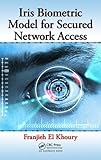Iris biometric model for secured network access [electronic resource] / Franjieh El Khoury.
Material type: TextPublication details: Boca Raton : CRC Press, 2013.Description: xvii, 204 p. : illISBN:
TextPublication details: Boca Raton : CRC Press, 2013.Description: xvii, 204 p. : illISBN: - 9781466502147 (ebook : PDF)
- Also available in print edition.
Includes bibliographical references and index.
pt. 1. State of the art -- pt. 2. Critical analysis of methods of iris recognition -- pt. 3. Our proposed model : the iris crypto agent system -- pt. 4. Implementation and simulations.
"The rapid evolution of technology in the computer world has made securing access to confidential data a very important issue in terms of research. This technology is likely to evolve in various architectures. Each architecture has its own functionality, its advantages and disadvantages. On the one hand the transition from a centralized to a decentralized system distributed locally or remotely, has facilitated the tasks in various sectors (i.e., educational, social, government, commercial, etc.). On the other hand, the integration of the Internet has encouraged communication at international level, and allowed operations remotely (i.e., e-commerce, e-banking, etc.). Besides the Internet, there is the mobile network that provides advanced services (i.e., multimedia messaging, Internet access, etc.)"-- Provided by publisher.
Also available in print edition.
Mode of access: World Wide Web.
There are no comments on this title.


